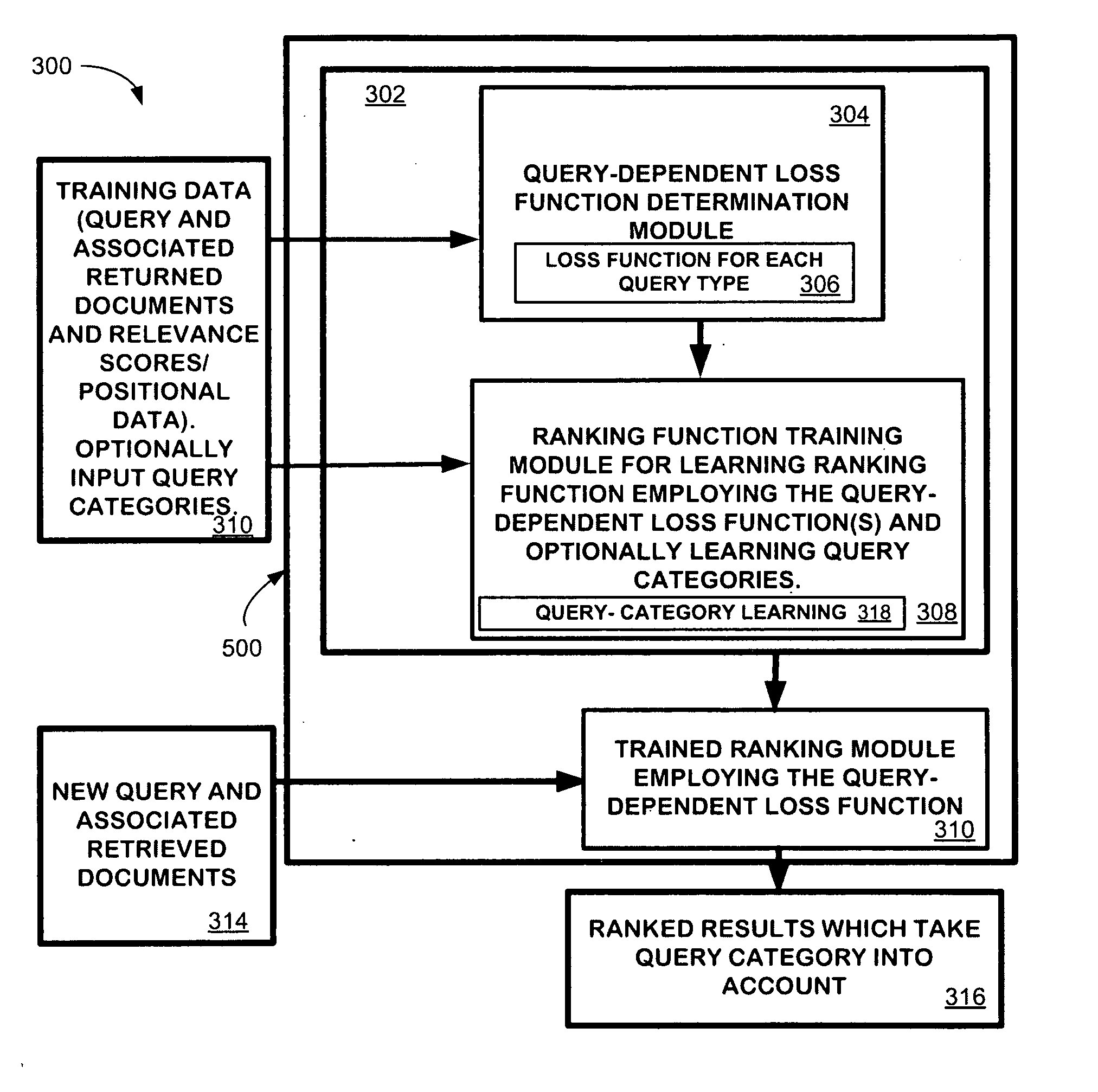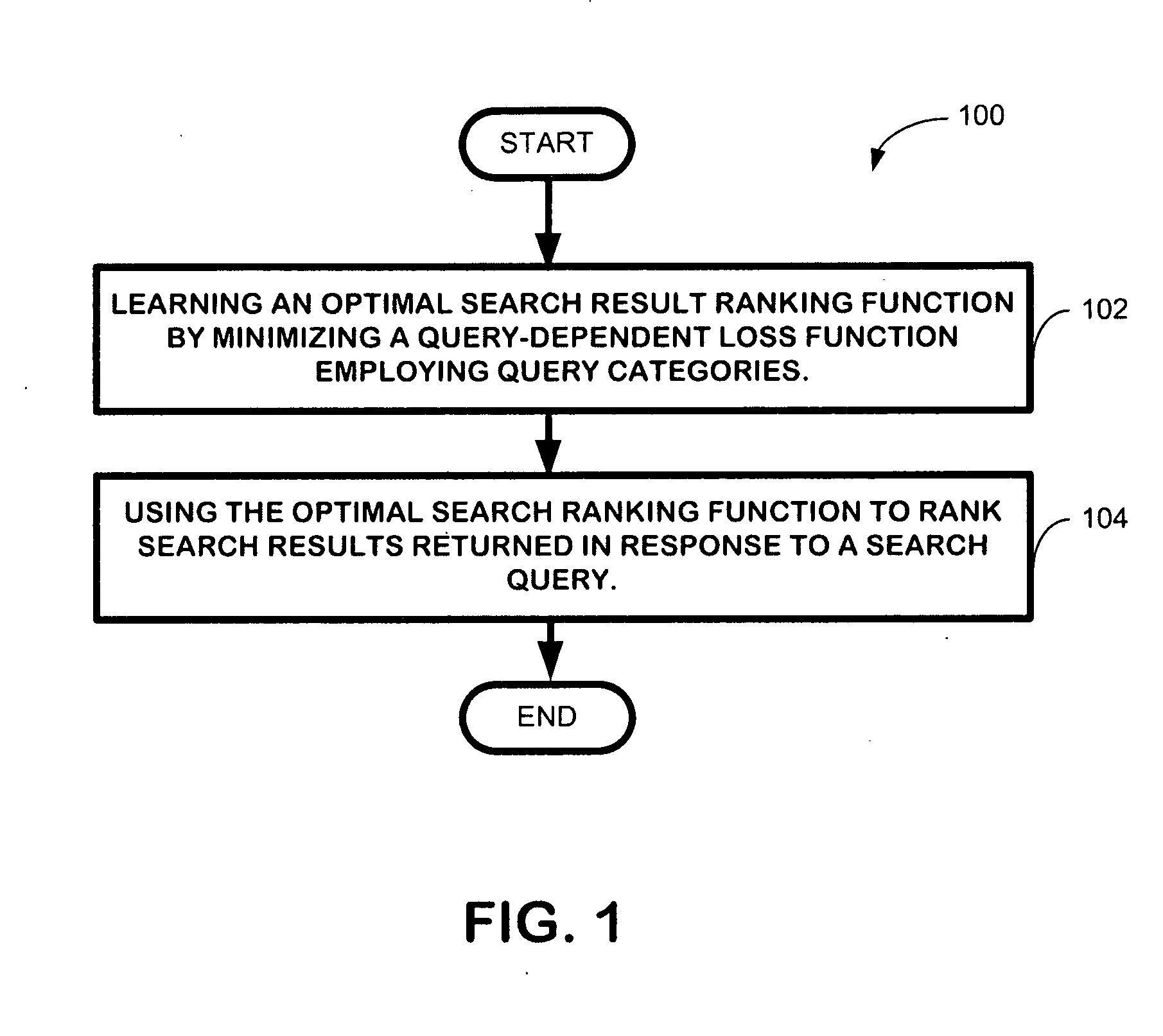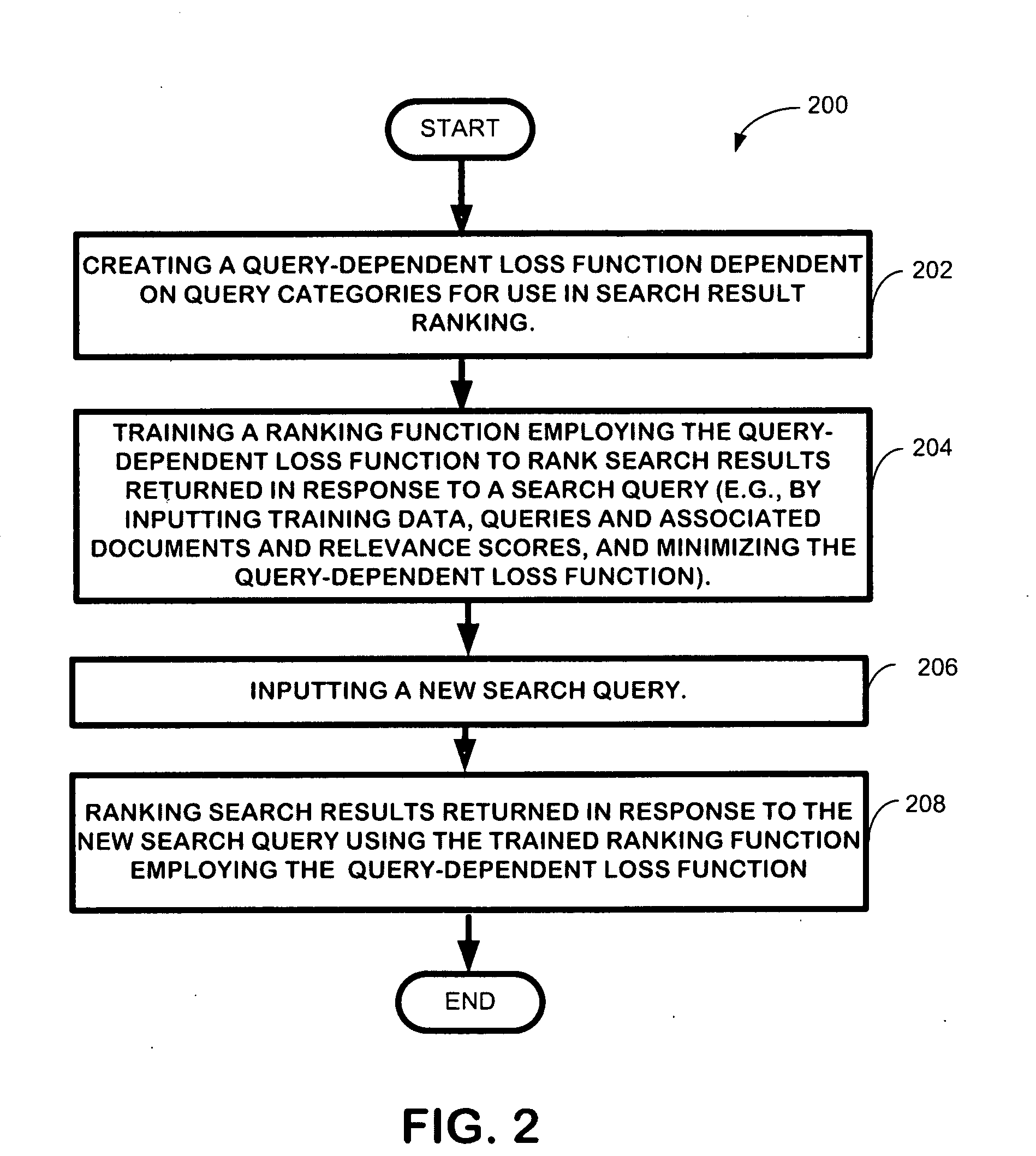Learning to rank using query-dependent loss functions
a loss function and rank technology, applied in the field of information retrieval and web search, can solve the problems of difficulty and cost in practice to define an individual objective, query categorizing may not be available at the learning time, and the apparent gap between the true rank position and multi-level relevance judgmen
- Summary
- Abstract
- Description
- Claims
- Application Information
AI Technical Summary
Benefits of technology
Problems solved by technology
Method used
Image
Examples
Embodiment Construction
[0012]In the following description of the query-dependent loss ranking technique, reference is made to the accompanying drawings, which form a part thereof, and which show by way of illustration examples by which the query-dependent loss ranking technique described herein may be practiced. It is to be understood that other embodiments may be utilized and structural changes may be made without departing from the scope of the claimed subject matter.
1.0 QUERY-DEPENDENT LOSS RANKING TECHNIQUE
[0013]The following paragraphs provide an introduction to the query-dependent loss ranking technique described herein. A description of a framework for employing the technique, as well as exemplary processes and an exemplary architecture for employing the technique are also provided. Throughout the following description details and associated computations are described.
1.1 INTRODUCTION
[0014]The query-dependent loss ranking technique described herein provides a general framework that incorporates q...
PUM
 Login to View More
Login to View More Abstract
Description
Claims
Application Information
 Login to View More
Login to View More - R&D
- Intellectual Property
- Life Sciences
- Materials
- Tech Scout
- Unparalleled Data Quality
- Higher Quality Content
- 60% Fewer Hallucinations
Browse by: Latest US Patents, China's latest patents, Technical Efficacy Thesaurus, Application Domain, Technology Topic, Popular Technical Reports.
© 2025 PatSnap. All rights reserved.Legal|Privacy policy|Modern Slavery Act Transparency Statement|Sitemap|About US| Contact US: help@patsnap.com



